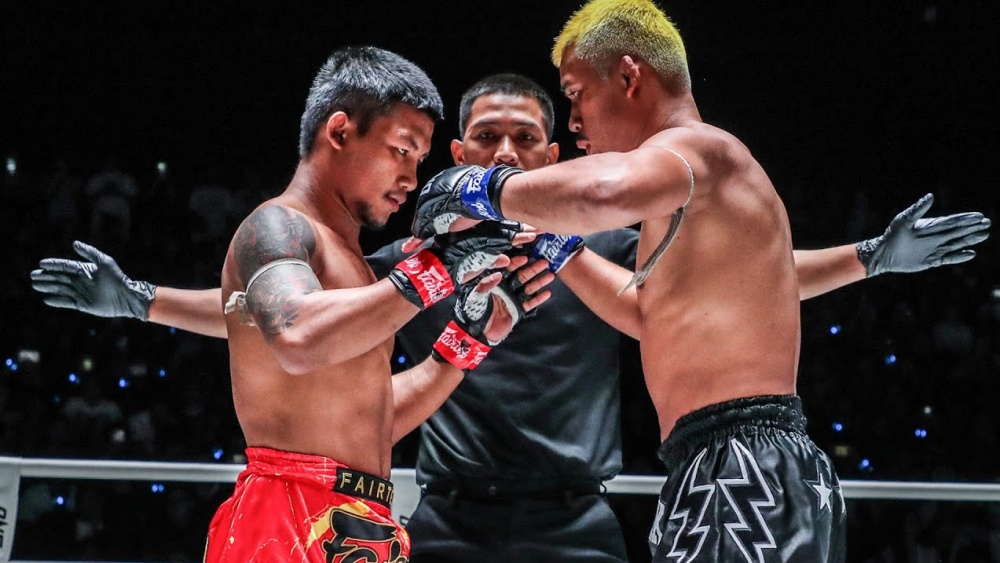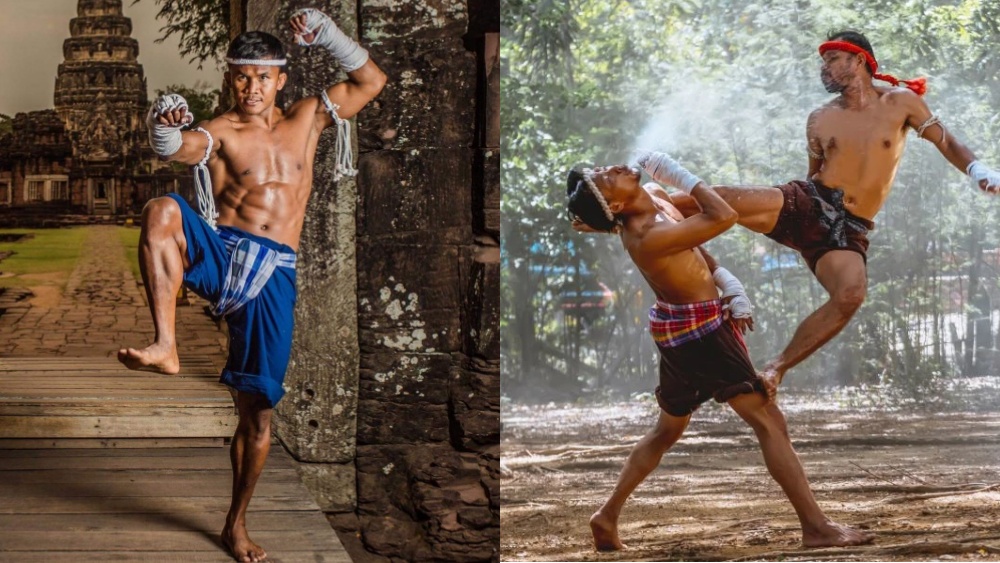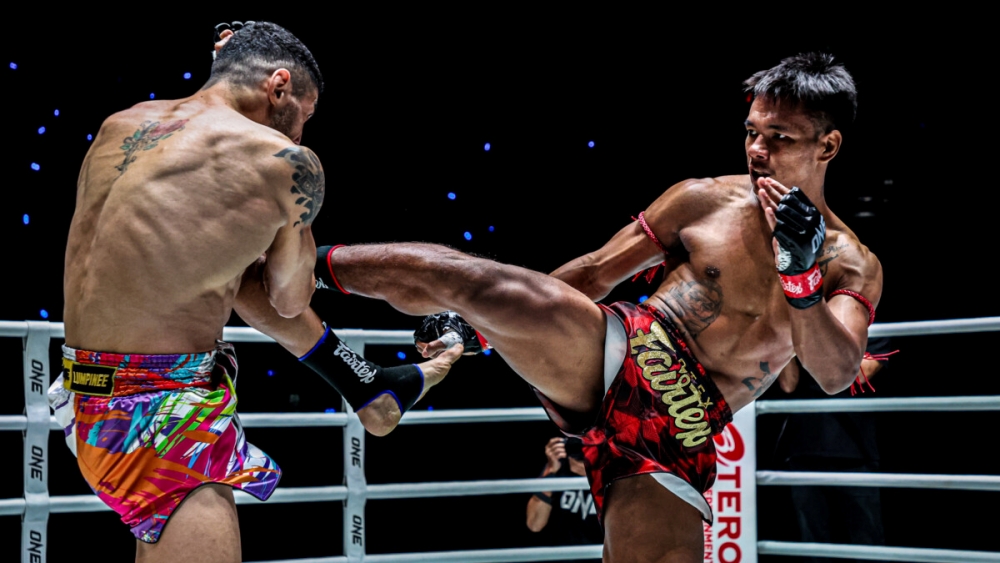Muay Thai has gone through a myriad of changes over the past decade. Between the growing popularity of three-round fights and the implementation of the Globalised Ruleset, there is no way that fighters of the past few generations could have anticipated the explosive developments in the sport or its sudden mainstream appeal. One of the most notable changes we’ve seen in recent years is the adoption of 4oz, MMA-styled gloves in some of the sport’s biggest promotions. This development has been met with a mixed reception from the Muay Thai community who remain undecided on when they should be used or if they should be used at all. In the next few paragraphs, we are going to discuss some of the common arguments for and against the use of 4oz gloves before suggesting how and when 4oz gloves can be used in the future of Muay Thai.
Are 4oz Gloves A Step Away From Tradition Or A Return To Muay Thai’s Ancient Heritage?
The move away from boxing-style gloves has been a divisive one in the Muay Thai community. Some Muay Thai “purists” see the implementation of smaller gloves as a step away from traditional scoring, and they claim that the smaller gloves, with their lack of padding, have resulted in most fighters relying only on Muay Mat and Muay Bouk styles of fighting that eliminate the importance of IQ and the variety of Muay Thai styles usually seen in the gambling stadiums of Thailand.
While there could be some merit to these claims, critics of the 4oz glove trend tend to forget that the use of boxing-style gloves is in fact a recent development in Muay Thai’s extensive history. Fighting in westernized, boxing gloves only became the norm for Muay Thai a century ago in the 1920’s. Before that, fighters commonly fought with roped hands, where the binding provided no padding whatsoever. The modern sport of Muay Thai, with its eight weapons, varied styles, and extensive clinch was developed throughout the centuries in which this was common practice. So, the rising commonality of aggressive punching styles can instead be seen as a combined result of faster-paced fights over fewer rounds and the implementation of a Globalised ruleset, not simply from the direct hits caused by the reduced padding on a fighter’s knuckles.
4oz Gloves Change The Way Muay Thai Is Fought
Fighters competing in ONE Championship, the most prolific promotion to champion the use of 4oz gloves, are generally seasoned professionals. They have trained for years to deal with punches and elbows long before they strip the extra padding from their gloves. Even then it is a tough transition, the smaller gloves provide far less cover, and defensive maneuvers that can be used in boxing-style gloves become glaring errors when you’ve only got 4oz strapped to your hands. You can’t close up your guard or rely on the padding to protect you from fists and elbows. Head movement and footwork become more important in these situations and many athletes have stumbled making the transition to smaller gloves.
4oz Gloves As Part Of A Tiered System
If we are to accept that the smaller gloves are a modern adaption of Muay Thai’s ancient heritage and agree that the use of smaller gloves is here to stay, then there needs to be a consensus on when they should be allowed in contests. Muay Thai has come a long way from its ancient roots, and adapting to 4oz gloves with a global ruleset should perhaps start from the amateur division.
With this in mind, we should look to the established amateur Muay Thai scenes around the globe for guidance on how and when 4oz gloves should be implemented in Muay Thai promotions. For example, fighters in the UK are developed through a stratified amateur rules system that begins with first-time fighters competing fully padded and without head contact. Over a succession of fights, the round lengths are increased, padding is removed, and weapons are added until the fighter and their coach are confident that they can handle “A-Class,” professional, competition. In such a system the use of 4oz gloves, would be seen as a logical progression on this tiered system, and should only be reserved for experienced professionals who have proven ring experience.
More Risk = More Reward

This system is an excellent way to develop talent while reducing the risks that inexperienced fighters take as they grow into the sport. Complimenting the increased risk fighters take as they rise through the amateur rulesets in the UK is an increased financial reward for their effort. The basic purse for a professional fighter is higher than one fighting in elbow padding due to the recognition of their skill and the other potential risks. It is these risks that create an exciting, crowd-pleasing fight. In fact, the popularity of ONE Championship and the fact that other promotions are piggybacking on its success with smaller gloves is a testament to the fact that fights in 4oz gloves attract bigger crowds and bigger revenue for promotors. With this in mind, the extra money that fights in smaller gloves attract should be shared with the athletes via increased purses for the increased risk, especially the risk of being hit directly which seems to be a rising concern for athletes competing in smaller gloves and can sideline a professional fighter for months at a time.
A Reasonable Compromise
Whether you agree with it or not, fights in 4oz gloves have become a popular part of the Muay Thai landscape and, it seems they’re here to stay. They are a modern expression of the ancient art of fighting with rope-bound knuckles which persisted for centuries before boxing gloves were introduced to Thailand and certainly hold a place in the global combat sport’s landscape. That being said, fighting in 4oz gloves shouldn’t become the only way in which Muay Thai is fought in the future. Amateur fighters need a chance to develop skills with padded shins and bigger gloves before they are thrown into the deep end. They should only be reserved for the most experienced athletes and these professionals should see a purse that reflects the increased risks that they face when they step into the ring wearing smaller gloves.
You may also like:
















